I have a confession to make: I have a thing about floors. Which is lucky, given the scale of the home renovation project we’ve undertaken! Joking aside, I do feel that flooring, in particular kitchen flooring, can often be overlooked. Think, for example, how much time most people spend choosing paint. The shopping trips, the samples and agonising over shades. (It’s even worse with wallpaper: unlimited patterns and colours to choose from seldom make for a swift decision.) Now have a long, hard think about what’s under your feet – possibly for the first time. Flooring is often the most neglected element of a room. I think that’s just crazy, given how important it is in terms of appearance and functionality.
So when I started to plan our new kitchen, my thoughts were focused on flooring from the outset. We’re creating a big, open living area, so the floor will cover a lot of space. And, unlike most of the walls, it won’t be hidden behind pictures, mirrors and appliances. I must admit, despite all my interiors knowledge and experience, choosing my new kitchen flooring wasn’t easy. There are so many elements to take into consideration, chiefly cost, appearance and practicality. However, after much deliberation (and a few changes of heart), we finally made a decision. Read on to discover my tried and tested guide to kitchen flooring ideas.
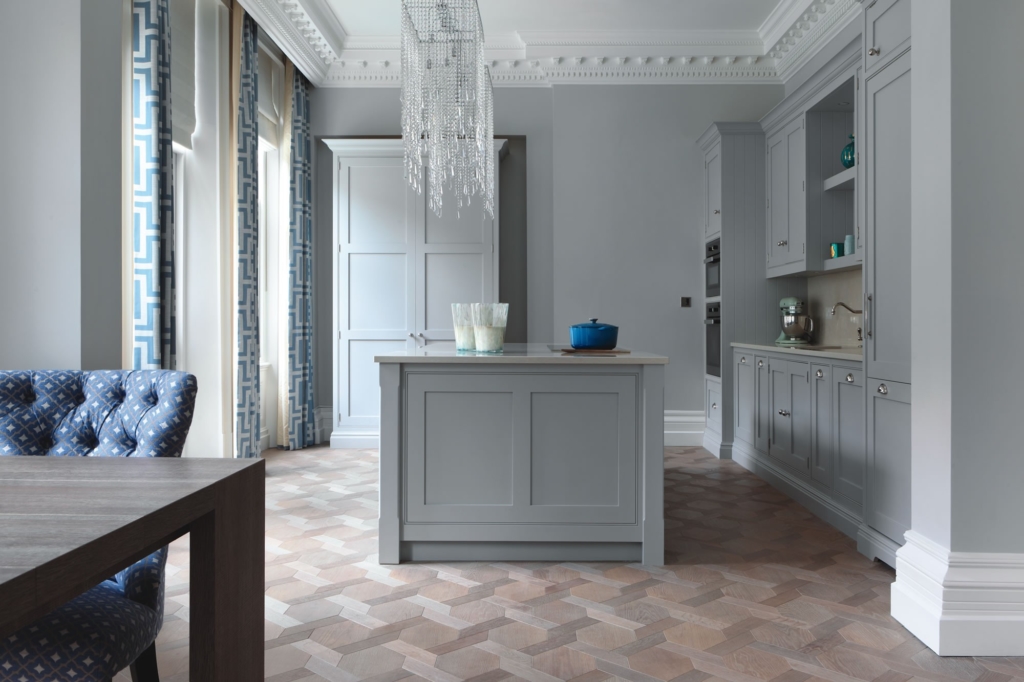
Hardwood flooring
Who doesn’t love the look of wood? Natural wood floors are gorgeous. They offer matchless warmth (literally and figuratively) plus classic style, which doesn’t date. Hardwood works well in both kitchen and living areas, so it’s perfect for open-plan spaces. But it doesn’t come cheap. The other downside is its durability. Water and wood really don’t mix, so any water damage will cause your floor to warp or split. Softer woods are prone to scratches and dents. And it does need sanding and refinishing every so often to keep it looking its best. Despite these drawbacks, I do have a penchant for parquet (essentially wooden blocks arranged in a geometric pattern). It’s a great way to add pattern and texture to your kitchen – and to customise your floor.
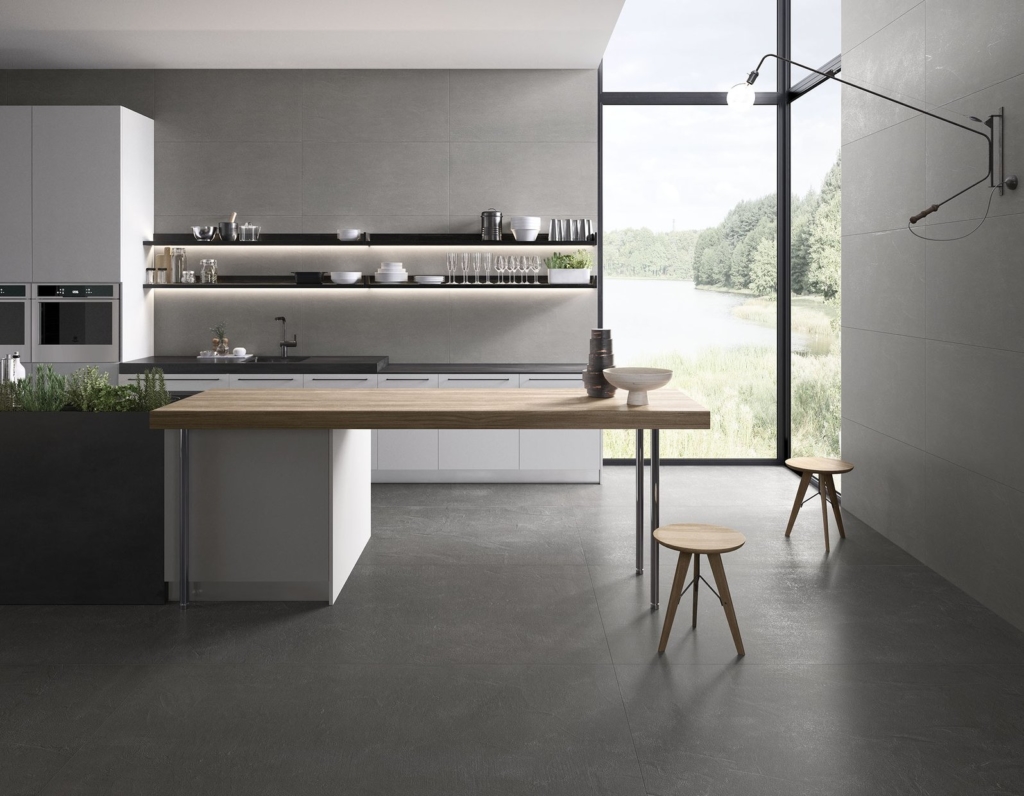
Porcelain tiles
I simply adore porcelain tiles – and it seems I’m not alone. They look amazing, and are extremely hard-wearing – perfect for a high-traffic open-plan kitchen. Waterproof, fire-proof, scratch-proof and stain-resistant, they are easy to clean and long-lasting too, if cared for properly. So far, so fabulous. However, there are drawbacks, starting with the price. Porcelain tiles don’t come cheap, and neither does the installation, as they are heavy and time-consuming to cut and lay. But the deal-breaker for me was temperature. Without underfloor heating, porcelain tiles feel seriously cold. Not such a problem for a stand-alone kitchen, perhaps, but less ideal for an open-plan living area. And unfortunately, I suffer from Raynaud’s so I need all the help I can get to keep warm! Another thing to consider is that a hard porcelain surface breaks dropped plates or glasses very easily. So that was another drawback for someone like me who can be clumsy!

Vinyl
Arguably the opposite of porcelain is vinyl. This is perhaps the perfect option if you’re on a tight budget and want a low-maintenance option. A bonus if you have butterfingers like me? Sheet vinyl is a soft flooring option, so it’s much more forgiving if you drop things a lot. It’s also kinder to your feet if you like to spend a lot of time cooking. The downside? That cushiness makes it difficult for the seams to stay bonded, which can let in dirt and moisture. And it’s not as hard-wearing as certain other flooring options. Vinyl used to have a bit of an image problem, but things have moved on significantly since the 1970s. How fabulous is this monochrome flooring from Harvey Maria? It’s a great option if you’ve set your heart on a statement floor that’s both practical and cost-effective.
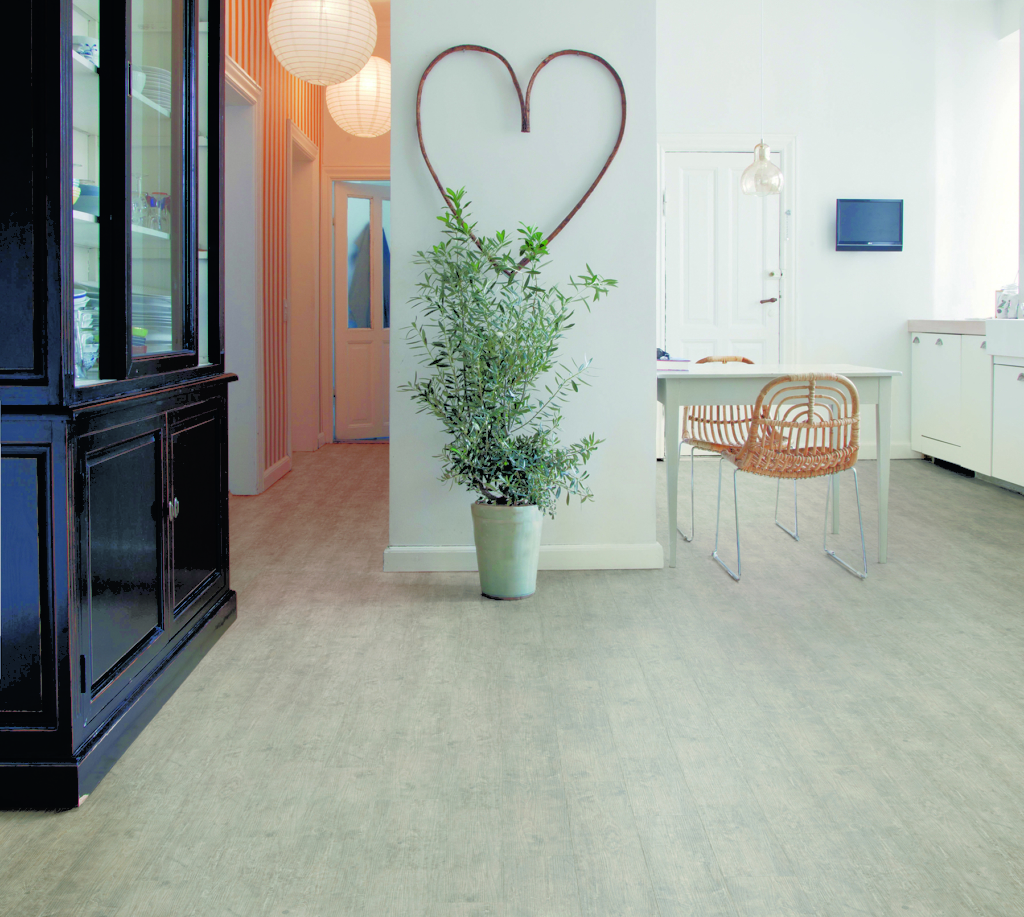
I became such a convert to vinyl that I ended up choosing it for my own kitchen floor. After ruling out porcelain, I seriously considered wood. I love the look of it, but concluded I need something more durable for such a multi-tasking space. Step forward this fabulous Polyfor luxury vinyl flooring which I bought locally.
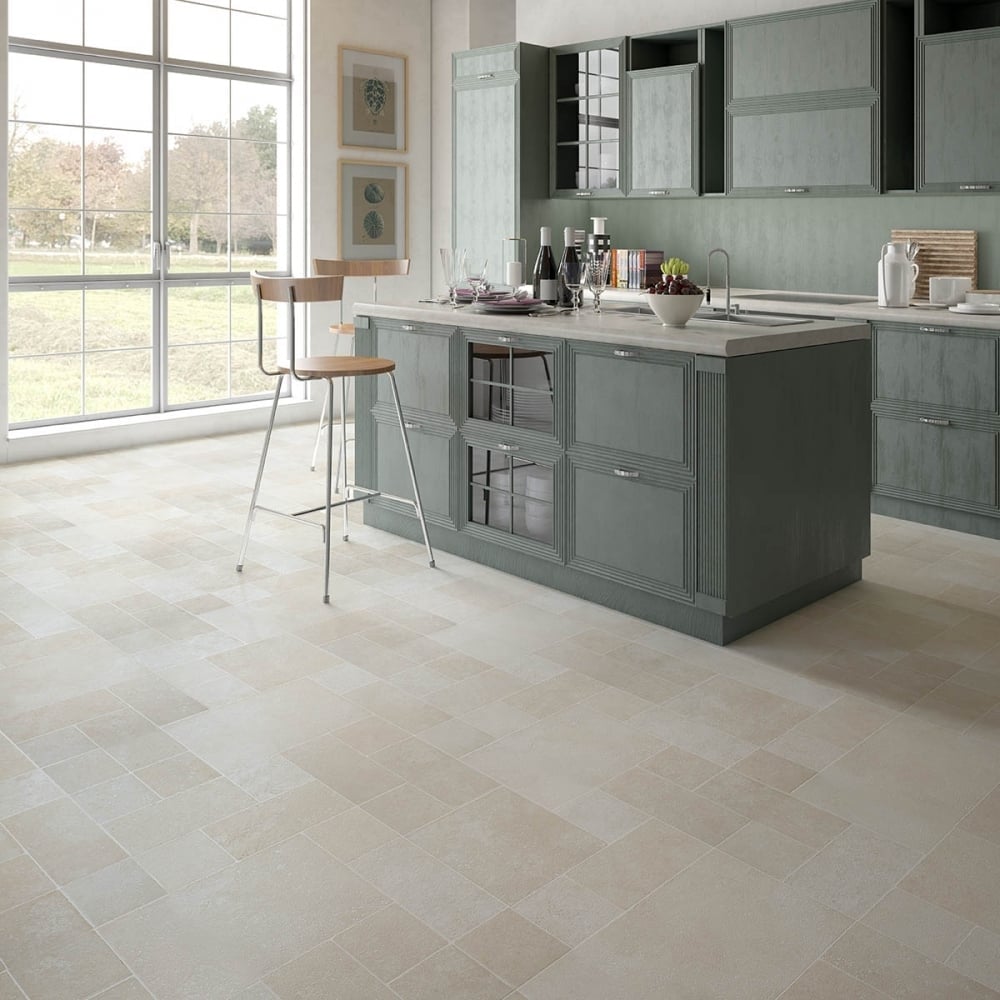
Laminate
Another stylish option for kitchen floors if you’re a fan of wood (but your bank manager isn’t) is laminate. Easy to install, and available in a wide variety of designs, laminate offers huge versatility at purse-friendly prices. It’s pretty easy to clean and maintain too. I’m very impressed with this Executive Beige Slate Laminate, which replicates a natural tile look.
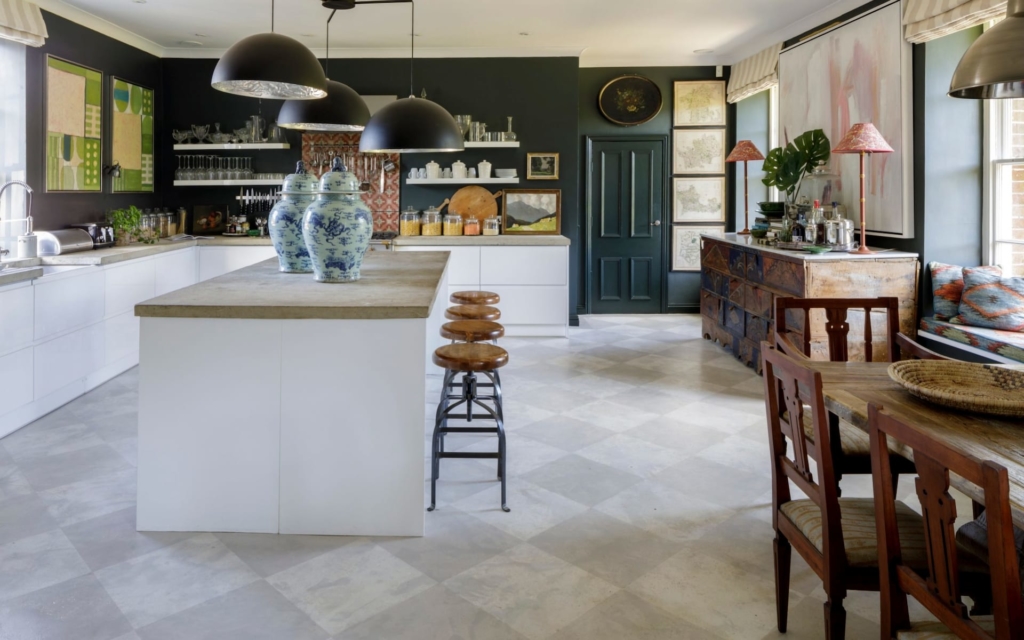
Concrete
For an ultra-contemporary look and finish, look no further than concrete. It’s perfect if you need a floor surface that’s super tough and resilient. No need to worry much about scratches and stains! If you think concrete floors are all ugly and utilitarian, it’s time to think again. Concrete is fast becoming the material of choice in an increasing number of high-end homes. New ways of mixing and setting mean that a wide range of colour and texture effects can be achieved.
Stone and clay
If concrete feels a little too extreme for your kitchen, a stone or clay floor is a good compromise. Natural stone is an obvious choice for traditional designs, but it works well in contemporary settings too. Stones tiles are classy, sturdy and less slippery than their ceramic counterparts (helpful if you have children/pets to consider). I love the rustic vibe of these clay-based ceramic terracotta tiles, which have hand-finished edges. This may have its disadvantages though. It can be expensive and some types can be a little porous and may chip.





